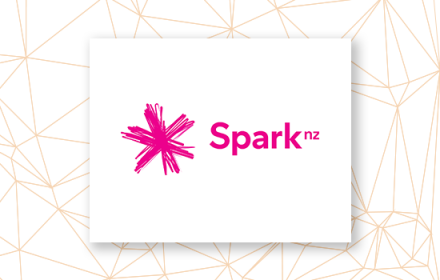Agile methodology and democratic organizational structures in the context of IT transformation projects
Modern forms of work in the information economy have gone through an intense transformation, which has accelerated significantly, not only since the events of 2020 have turned the world upside down. The information economy requires its protagonists to work with a high degree of flexibility and the ability to change. This, in turn, has an impact on the way people collaborate and has brought forth new methods and ways to structure organizations and manage workloads.
In our interview, we had the opportunity to speak to Josef Ebmer and Johannes Stürzlinger about these processes and how they impact companies like NTS Retail. For his master thesis, Josef Ebmer has looked intensively at the effects of the introduction of democratic organizational structures at different companies. Among others, NTS Retail was one of the companies he analyzed for this thesis. Our COO Johannes Stürzlinger has led countless transformation projects for leading telco brands and has also been involved first-hand into the introduction of Scrum at our company from the very early stages on. Together, we discussed the effects and challenges which go along with the introduction of agile methodology. We hope you have a great time reading this interview!
NTS Retail has adopted the agile framework to manage its development teams and parts of its project teams a couple of years ago. How did you experience the introduction process? What types of change has the company seen since and how have process been adapted?

Johannes: Our motivation to adopt the agile framework was multi-faceted. Achieving a better mode of collaboration, both internally and with our project teams (our customers, partners and NTS Retail) was one of the main key drivers in the transition. Additionally, we wanted to ensure we can react more quickly to dynamics in the market and emerging customer requests. We are convinced that agile methodology results in a better quality of our products and services.
At NTS Retail, we introduced agile methodology with a step-by-step approach. We started using Scrum in a limited setting with only one development team. Progressively, we started to extend the agile methodology to all teams working on developing our products. We adopted the standardized Scaled Agile Framework (SAFe) model in our process. There was a lot to learn as the models, roles and the agile style of meetings was new for many among our teams. Working in the agile framework requires a high amount of process discipline in order to assure good efficiency. With a better sense of familiarity with the framework, we decided to onboard the development teams working on customizations as well. This required us to adopt the solution as most of our clients still conduct projects following traditional process models (primarily the V and waterfall model). In such cases, the project team usually works similarly to our clients while the development teams work using the agile framework. Besides the different mode of operation within the project, the commercial and contractual side of things also needs to be adjusted in order to facilitate agile collaboration.

You researched different models of employee participation in your thesis. Which models are most dominant in the modern information economy? Are there regional or industry-specific differences?
Josef: Generally speaking, democratic models are mostly used in industries that cannot function using a strictly structured process where clear orders are merely executed. In the information economy in particular, it is not only the methodic professional competence of the individuals, but also their initiative and creative problem-solving skills, which usually determine an organization’s success. In software development, this has resulted in a tendency towards agile teams using methods like Scrum or Kanban. For medium-sized companies, hierarchies are usually flat while in larger organizations the upper management layer may be organized following a democratic structure.
The sample I used in my study was too small to be able to ascertain industry-specific distinctions, but my personal impression is that models like Scrum are predominantly used in software development. Even more extensive frameworks of employee participation such as holocracies or sociocracies are mostly found in executive management, consulting companies and, sometimes, in the field of social economy. The framework of a sociocracy is being discussed increasingly and sees some adoption, driven, in part, by the Soziokratiezentrum in Vienna, which provides consulting and training. A rarity among Austrian companies at this point are organizations using a holocratic approach.
How does a substantial opportunity to participate in key processes impact a company’s chance of success?
Josef: A well-executed program to introduce democratic participation for employees can have a very positive effect on a company’s success. Especially in the information economy, a company’s employees are the most important resource. If they are made a part of the democratic process within the company, there are many benefits.
Employees who are fully integrated into the organization, who see a clear purpose in their tasks, and who are being appreciated in their expertise, are more engaged and more inclined to make full use of their potential. They will bring forth suggestions to optimize the product, their department or even the entire organization, which otherwise might have never occurred to the management. Depending on how extensive the method of employee participation is, the suggestions can even be approved by the employees as well.
Why are companies introducing democratic processes? What are the expectations they hold regarding such measures?
Josef: A key motivation to introduce a democratic transition process on various company levels is to allow employees to become an integral part of the company’s business. This allows for more effective and often faster execution. The main goal is to strike a path that leads away from the predominant motive of an employee to simply fulfill orders. The employee should not merely work for a company, they should consider themselves a part of it and have a personal stake in the company’s success.
It’s important to note here that this does not only benefit the company. It seems to me that employees, who can strongly identify with their work and their organization, are not only more productive but also more content in their role. In the software industry, young expert workers are increasingly demanding to be made a part of project-specific decisions. In their job search, they clearly favor companies that demonstrate a strong sense of employee participation. Herein lies an important motivation to adopt a democratic transition process: Companies can position themselves as a great employer and can differentiate themselves from the competition.
Following daily routines (be it on the client side or internally), it is entirely possible that not all processes within project can be organized following the agile methodology. Which possible areas of conflict can arise out of that and how can an organization address that?
Both: Within the development teams, communication and cooperation using models like Scrum is usually quite a pleasant experience. Developers enjoy a great deal of certainty in their planning. The collaboration with customers may be more difficult, as there might be the need to implement sudden changes. If a product is being developed for an external client, the Scrum process assumes that the client will always be readily available to answer emerging questions and provide feedback in time. If the Scrum process is followed strictly, the pricing and date of delivery for a project should also be defined as the process is already occurring.
In actual practice, this process cannot always be followed through consequently. Customers request that project plan, scope, deadlines, and budget are defined from the early stages on. This compromises the Scrum process. The biggest asset of employing agile methodology lies in being able to implement desired changes from the customer but also to be able to address and implement potential optimizations as the development is still ongoing. If the project is strictly specified from the very beginning, additional feedback loops between the customer and the project owner might not be a planned part of the process. Such projects are typically divided into sprints, just as other Scrum projects, and are being worked through by the development teams step-by-step. A recurring presentation of the current progress with the customer present are thus practical in order to avoid potential misunderstandings and to identify necessary changes to the specification early on.
In such cases, it is crucial to not just strictly stick to the designated Scrum process. It is more important to question, as an organization, which benefits are expected from the agile way to work. Some of those, like the easier ability to implement feedback into the product, may not be possible anymore. Any steps taken along a path which will lead to a goal that is no longer attainable, will not benefit anyone and should be eliminated from the process. Ideally, this enables everyone to benefit from agile methodology, without making the lives of oneself or one’s employees harder by insisting on irrelevant structures.
What trends for agile organizations are tangible when looking at the multinational customer base of NTS Retail?
Johannes: There is a trend towards agile forms of organization which is noticeable around the globe. The degree to which this trend is being followed varies though. On the one hand, there are organizations among our range of customers, which have successfully switched to an agile process across their entire company, for example using the Scaled Agile Framework (SAFe). On the other hand, there are also clients which are still very much at the beginning of the process or do not intend to adopt an agile methodology at all.
Regardless of the methodology in use, a better integration and empowerment of the employees remains an essential motivation. Being able to address customer demands quickly and flexibly with a high level of quality also is very much atop the agenda. In the software industry, for example, this means that internal and external clients can have their desired changes implemented faster into the product and benefit from the changes earlier. Releases are not just deployed in six- or nine-month intervals but rather each month, for example, with fewer changes which still bring a direct benefit to the client.
Unfortunately, it is often the case that the agile transformation takes place on paper, but that the day-to-day still very much consists of a traditional way of working. This is typically a result of unresolved internal disputes and inefficiencies because one side is committed to the agile process while the other side is not following suite for a variety of reasons. Another key goal is to facilitate a more intense collaborative partnership between the teams from both the customer and the vendor. This enables both to reach consensus on requirements quicker and to receive immediate feedback on the implementation. At NTS Retail, we have already learned a lot in our agile transition and are proud of our achievements thus far, but there still is a path to go and improvements that need to happen.
We would like to wholeheartedly thank Josef Ebmer and Johannes Stürzlinger for taking the time to be with us for this interview! If you would like to know more about the projects we see through at NTS Retail, feel free to explore our case studies.




